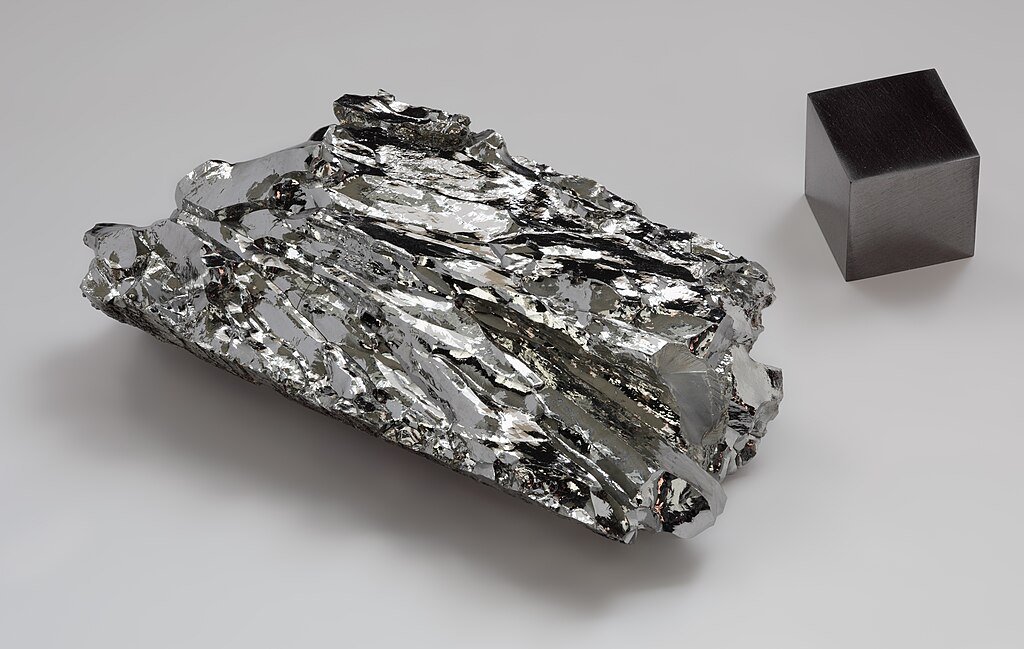23 February 2024
Molydenum is a chemical element with atomic number 42 and the symbol Mo. It has been known since antiquity but was generally considered a type of lead or graphite. It wasn’t classified as an element until the eighteenth century. The element takes its name from the Latin molybdaena, a name for a variety of ores containing either lead or molybdenum. It’s ultimately from the Greek μολύβδαινα (molubdaina) meaning lead ore or an angler’s plummet.
In its natural state, molybdenum is found only in compounds with other metals and resembles and has many of the properties of lead and graphite. In its pure form it is a silvery metal with a gray cast. It is commonly used in creating steel alloys.
The Latin molybdaena can be found in Pliny the Elder’s Naturalis historia (Natural History), which was completed in 77 CE:
Est et molybdaena, quam alio loco galenam appellavimus, vena argenti plumbique communis. melior haec, quanto magis aurei coloris quantoque minus plumbosa, friabilis et modice gravis.
(There is also molybdenum, which in another place we called galena; a common vein of silver and lead. These are better the more golden in color and the less leaden; friable and of moderate weight.)
As you can see from Pliny’s description, the ancients considered it to be a variety of lead. And this belief extended into the modern era. The earliest use of molybdenum in English that I have found (there are undoubtedly earlier uses to be unearthed) calls it “black lead.” From John Hill’s 1771 Fossils Arranged According to Their Obvious Characteristics:
Black Lead.
Molybdænum.
Composed of minute, fatty, irregular, and close-connected Scales, staining the hands.
The first person to identify molybdenum as an element in its own right was Carl Wilhelm Scheele in 1778.
Sources:
Hill, John. Fossils Arranged According to Their Obvious Characteristics. London: R. Baldwin and P. Elmsley, 1771, 16. Eighteenth Century Collections Online (ECCO).
Miśkowiec, Pawel. “Name Game: The Naming History of the Chemical Elements—Part 1—from Antiquity till the End of 18th Century.” Foundations of Chemistry, 1 November 2022. DOI: 10.1007/s10698-022-09448-5.
Oxford English Dictionary, third edition, September 2002, s.v. molybdenum, n., molybdenic, adj.
Pliny. Natural History: Books 33–35, vol. 9 of 10. H. Rackham, trans. 1952. Loeb Classical Library 330. Cambridge, Massachusetts: Harvard UP, 34.53, 252–53. Loebclassics.com.
Scheele, Carl Wilhelm. “Försök med Blyerts, Molybdæna.” Kungliga Svenska Vetenskapsakademiens Handlingar, 39, 1778, 247–55. Gale Primary Sources: Nineteenth Century Collections Online.
Photo credit: Heinrich Pniok, 2010. Wikimedia Commons. Used under a Creative Commons Attribution-NonCommercial-NonDerivative 3.0 (US) license.

